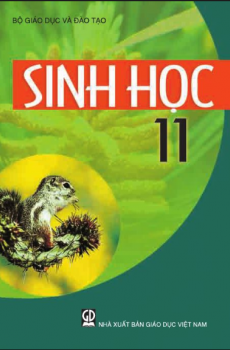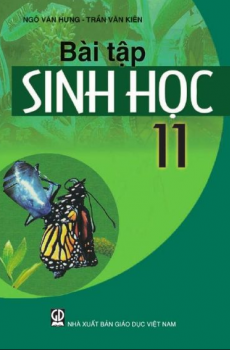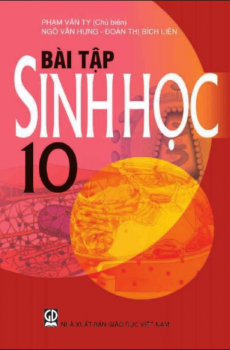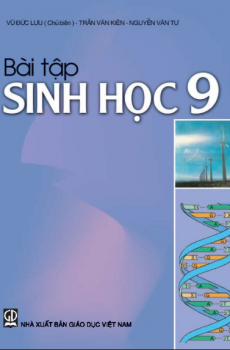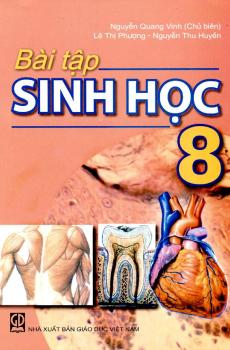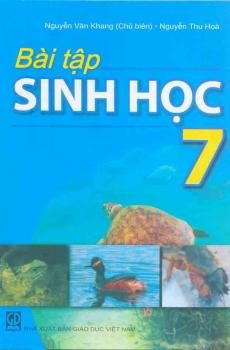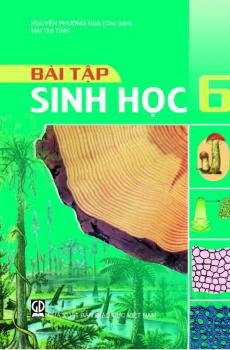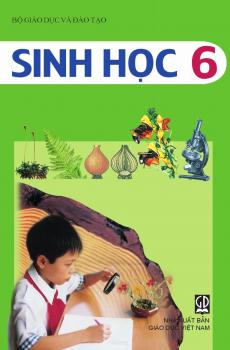Darwinism (1889)
Darwinism (1889)
Log in to download this book.
| Publisher | Chưa rõ |
|---|---|
| Accessible book producer | Public domain |
| Published year | 2005 |
| Coppy right | Chưa rõ |
CHAPTER I
WHAT ARE "SPECIES" AND WHAT IS MEANT BY THEIR "ORIGIN"
Definition of species—Special creation—The early transmutationists—Scientific opinion before Darwin—The problem before Darwin—The change of opinion effected by Darwin—The Darwinian theory—Proposed mode of treatment of the subject
CHAPTER II
THE STRUGGLE FOR EXISTENCE
Its importance—The struggle among plants—Among animals—Illustrative cases—Succession of trees in forests of Denmark—The struggle for existence on the Pampas—Increase of organisms in a geometrical ratio—Examples of rapid increase of animals—Rapid increase and wide spread of plants—Great fertility not essential to rapid increase—Struggle between closely allied species most severe—The ethical aspect of the struggle for existence
CHAPTER III
THE VARIABILITY OF SPECIES IN A STATE OF NATURE
Importance of variability—Popular ideas regarding it—Variability of the lower animals—The variability of insects—Variation among lizardsVariation among birds—Diagrams of bird-variation—Number of varying individuals—Variation in the mammalia—Variation in internal organs—Variations in the skull—Variations in the habits of animals—The variability of plants—Species which vary little—Concluding remarks
CHAPTER IV
VARIATION OF DOMESTICATED ANIMALS AND CULTIVATED PLANTS
The facts of variation and artificial selection—Proofs of the generality of variation—Variations of apples and melons—Variations of flowers—Variations of domestic animals—Domestic pigeons—Acclimatisation—Circumstances favourable to selection by man—Conditions favourable to variation—Concluding remarks
CHAPTER V
NATURAL SELECTION BY VARIATION AND SURVIVAL OF THE FITTEST
Effect of struggle for existence under unchanged conditions—The effect under change of conditions—Divergence of character—In insects—In birds—In mammalia—Divergence leads to a maximum of life in each area—Closely allied species inhabit distinct areas—Adaptation to conditions at various periods of life—The continued existence of low forms of life—Extinction of low types among the higher animals—Circumstances favourable to the origin of new species—Probable origin of the dippers—The importance of isolation—On the advance of organisation by natural selection—Summary of the first five chapters
CHAPTER VI
DIFFICULTIES AND OBJECTIONS
Difficulty as to smallness of variations—As to the right variations occurring when required—The beginnings of important organs—The mammary glands—The eyes of flatfish—Origin of the eye—Useless or non-adaptive characters—Recent extension of the region of utility in plants—The same in animals—Uses of tails—Of the horns of deer—Of the scale-ornamentation of reptiles—Instability of non-adaptive characters—Delboeuf's law—No "specific" character proved to be useless—The swamping effects of intercrossing—Isolation as preventing intercrossing—Gulick on the effects of isolation—Cases in which isolation is ineffective
CHAPTER VII
ON THE INFERTILITY OF CROSSES BETWEEN DISTINCT SPECIES AND THE USUAL STERILITY OF THEIR HYBRID OFFSPRING
Statement of the problem—Extreme susceptibility of the reproductive functions—Reciprocal crosses—Individual differences in respect to cross-fertilisation—Dimorphism and trimorphism among plants—Cases of the fertility of hybrids and of the infertility of mongrels—The effects of close interbreeding—Mr. Huth's objections—Fertile hybrids among animals—Fertility of hybrids among plants—Cases of sterility of mongrels—Parallelism between crossing and change of conditions—Remarks on the facts of hybridity—Sterility due to changed conditions and usually correlated with other characters—Correlation of colour with constitutional peculiarities—The isolation of varieties by selective association—The influence of natural selection upon sterility and fertility—Physiological selection—Summary and concluding remarks
CHAPTER VIII
THE ORIGIN AND USES OF COLOUR IN ANIMALS
The Darwinian theory threw new light on organic colour—The problem to be solved—The constancy of animal colour indicates utility—Colour and environment—Arctic animals white—Exceptions prove the rule—Desert, forest, nocturnal, and oceanic animals—General theories of animal colour—Variable protective colouring—Mr. Poulton's experiments—Special or local colour adaptations—Imitation of particular objects—How they have been produced—Special protective colouring of butterflies—Protective resemblance among marine animals—Protection by terrifying enemies—Alluring coloration—The coloration of birds' eggs—Colour as a means of recognition—Summary of the preceding exposition—Influence of locality or of climate on colour—Concluding remarks
CHAPTER IX
WARNING COLORATION AND MIMICRY
The skunk as an example of warning coloration—Warning colours among insects—Butterflies—Caterpillars—Mimicry—How mimicry has been produced—Heliconidae—Perfection of the imitation—Other cases of mimicry among Lepidoptera—Mimicry among protected groups—Its explanation—Extension of the principle—Mimicry in other orders of insects—Mimicry among the vertebrata—Snakes—The rattlesnake and the cobra—Mimicry among birds—Objections to the theory of mimicry—Concluding remarks on warning colours and mimicry
CHAPTER X
COLOURS AND ORNAMENTS CHARACTERISTIC OF SEX
Sex colours in the mollusca and crustacea—In insects—In butterflies and moths—Probable causes of these colours—Sexual selection as a supposed cause—Sexual coloration of birds—Cause of dull colours of female birds—Relation of sex colour to nesting habits—Sexual colours of other vertebrates—Sexual selection by the struggles of males—Sexual characters due to natural selection—Decorative plumage of males and its effect on the females—Display of decorative plumage by the males—A theory of animal coloration—The origin of accessory plumes—Development of accessory plumes and their display—The effect of female preference will be neutralised by natural selection—General laws of animal coloration—Concluding remarks
CHAPTER XI
THE SPECIAL COLOURS OF PLANTS: THEIR ORIGIN AND PURPOSE
The general colour relations of plants—Colours of fruits—The meaning of nuts—Edible or attractive fruits—The colours of flowers—Modes of securing cross-fertilisation—The interpretation of the facts—Summary of additional facts bearing on insect fertilisation—Fertilisation of flowers by birds—Self-fertilisation of flowers—Difficulties and contradictions—Intercrossing not necessarily advantageous—Supposed evil results of close interbreeding—How the struggle for existence acts among flowers—Flowers the product of insect agency—Concluding remarks on colour in nature
CHAPTER XII
THE GEOGRAPHICAL DISTRIBUTION OF ORGANISMS
The facts to be explained—The conditions which have determined distribution—The permanence of oceans—Oceanic and continental areas—Madagascar and New Zealand—The teachings of the thousand-fathom line—The distribution of marsupials—The distribution of tapirs—Powers of dispersal as illustrated by insular organisms—Birds and insects at sea—Insects at great altitudes—The dispersal of plants—Dispersal of seeds by the wind—Mineral matter carried by the wind—Objections to the theory of wind-dispersal answered—Explanation of north temperate plants in the southern hemisphere—No proof of glaciation in the tropics—Lower temperature not needed to explain the facts—Concluding remarks
CHAPTER XIII
THE GEOLOGICAL EVIDENCES OF EVOLUTION
What we may expect—The number of known species of extinct animals—Causes of the imperfection of the geological record—Geological evidences of evolution—Shells—Crocodiles—The rhinoceros tribe—The pedigree of the horse tribe—Development of deer's horns—Brain development—Local relations of fossil and living animals—Cause of extinction of large animals—Indications of general progress in plants and animals—The progressive development of plants—Possible cause of sudden late appearance of exogens—Geological distribution of insects—Geological succession of vertebrata—Concluding remarks
CHAPTER XIV
FUNDAMENTAL PROBLEMS IN RELATION TO VARIATION AND HEREDITY
Fundamental difficulties and objections—Mr. Herbert Spencer's factors of organic evolution—Disuse and effects of withdrawal of natural selection—Supposed effects of disuse among wild animals—Difficulty as to co-adaptation of parts by variation and selection—Direct action of the environment—The American school of evolutionists—Origin of the feet of the ungulates—Supposed action of animal intelligence—Semper on the direct influence of the environment—Professor Geddes's theory of variation in plants—Objections to the theory—On the origin of spines—Variation and selection overpower the effects of use and disuse—Supposed action of the environment in imitating variations—Weismann's theory of heredity—The cause of variation—The non-heredity of acquired characters—The theory of instinct—Concluding remarks
CHAPTER XV
DARWINISM APPLIED TO MAN
General identity of human and animal structure—Rudiments and variations showing relation of man to other mammals—The embryonic development of man and other mammalia—Diseases common to man and the lower animals—The animals most nearly allied to man—The brains of man and apes—External differences of man and apes—Summary of the animal characteristics of man—The geological antiquity of man—The probable birthplace of man—The origin of the moral and intellectual nature of man—The argument from continuity—The origin of the mathematical faculty—The origin of the musical and artistic faculties—Independent proof that these faculties have not been developed by natural selection—The interpretation of the facts—Concluding remarks




